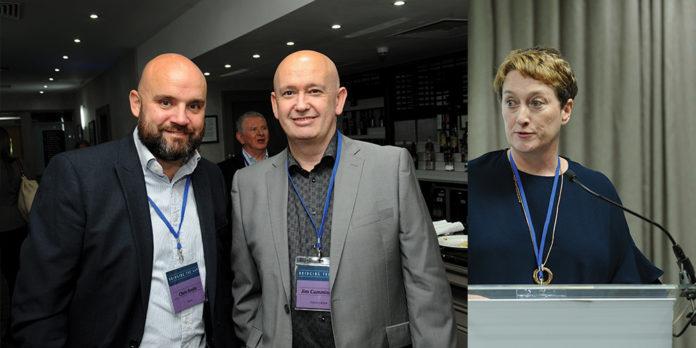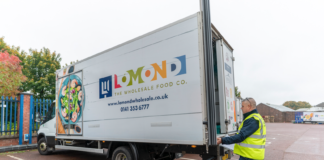
Helena Drakakis reports on the debut SWA foodservice event and discovers a nation’s potential.
With Scotland’s food and drink industry overtaking oil and gas as the prime economic driver, foodservice has never been higher on the agenda north of the border.
Oil and gas, worth over £13.4bn and long considered the country’s main economic engine, now takes a back seat, as food and drink is estimated to be worth £14bn per annum to the Scottish economy.
Wholesalers north of the border need to plan accordingly, says James Withers, chief executive of membership organisation Scotland Food and Drink, whose speech at the first ever Scottish Wholesale Association (SWA) foodservice conference, Bridging the Gap, was designed to inspire wholesalers and suppliers alike.
“I think we have a phenomenal asset in Scotland, and it is an asset others would give their eye teeth for. Around 75% of the land mass is under agricultural production; it has one of the longest coastlines in Europe and we land more species of fish than any other country on earth. Scotland needs to become the land of food and drink,” Withers urged.
Given he is also a board member of the Scottish Tourism Alliance, you might think his is a biased view. But Scotland’s most recent challenge illustrates his message. According to a recent report in The Guardian, Scottish distilleries now rival St Paul’s Cathedral for annual visitors; the recently-opened North Coast 500 route has brought an extra 29,000 visitors to the Highlands – a 26% rise in the annual numbers.
Indeed, this summer saw such growth in tourist numbers that the Scottish government has just announced £6m of funding to improve the nation’s infrastructure, which was insufficient to cope with the influx.
Providing that sustainable solutions can be found to ease this strain, the upside is that Scotland’s heady mix of whisky, heritage and scenery is good news for the food and drink supply chain, from field or sea through to plate – the food and drink sector’s current growth in Scotland is double that of the average of the rest of the UK, according to Withers.
So what is the secret of this burgeoning success? Withers believes it started 10 years ago when the Scottish government engaged the industry directly in helping to draw up policy. This collaboration is the first of its kind in the UK (Wales is soon to follow suit), and with it developed a common goal to grow the value and reputation of food and drink.
Meeting the impact of that growth is a more complex story perhaps, with several wholesale delegates at the conference highlighting the importance of companies investing in technology, staff and the customer experience to keep up with the pace of change and fierce competition now evident in the sector.
Jon Mack, general manager of Bidfood Scotland, whose clients include CalMac Ferries, Bupa and Celtic Football Club, challenged those at the event to shape their businesses around meeting increased customer expectation.
“In the good old days, the customer wanted someone who turned up with a box. Now they want a partner who they can consult with on what is coming down the track and really drive the business forward. We must gear up for that,” he said.
A global company that works using a decentralised model, Bidfood Scotland operates from six hubs. The company undertakes 375,000 deliveries per year and moves 16.5m boxes.
“I encourage people to see the size of the market and be part of something that is becoming very energetic,” Mack added.
That size inevitably brings challenges, not least uncertainty around Brexit – 70% of Scottish food and drink exports go to the rest of the EU and 40,000 members of the Scottish workforce come from other EU countries.
With this in mind, the need to develop Scottish talent has been highlighted through the SWA’s own mentoring scheme, which has gone from strength to strength, and other training opportunities, such as a scheme run by Hospitality Industry Scotland (HIT), which helps workers achieve their potential with bursaries and scholarships.
HIT chief executive David Cochrane said: “Keeping the right people is an issue, and we can assist people in getting them where they need to be. How recently did you upgrade your skills to match what the industry needs?”
Cochrane added that education was about lifelong learning and certainly not just for young workers.
Listening to your customers – whether they are chefs, retailers or the public – should also come high on the list when shaping your offer.
“If you are running fleet management or development chefs, it is a really responsible, professional job. The days of transient work are gone and we cannot afford people in our industry who cannot think and act and who are not commercially driven,” Cochrane added.
Not least, foodservice wholesale in Scotland needs people and companies that can flex and adapt to the increasing complexity of the industry.
Dunns Food and Drinks is a “one call gets it all” wholesaler and a company that embraced foodservice in 1989 with the onset of casual dining. Its managing director, Jim Rowan, said: “When we started out, the customer was happy with multiple supply channels. Times have changed.”
He charted the tipping point as the entry of giants like Brakes and Bidfood into Scotland, and the level of service and professionalism both brought to the market. The latest threat is from cash & carries that want to replicate everything specialist foodservice wholesalers offer, Rowan said.
“In my day, cash & carries did not deliver, did not give credit and only had a small range of products. Now there are entrants all contributing to the sector and helping its growth,” he added.
To adapt, Dunns has had to become a “total foodservice solution”, offering anything from menu-planning services to professional kitchen-fitting.
What is around the corner is impossible to predict, but Scotland is currently flying the flag of success.
As Rowan concluded: “We have to be match-fit and on the ball.”







